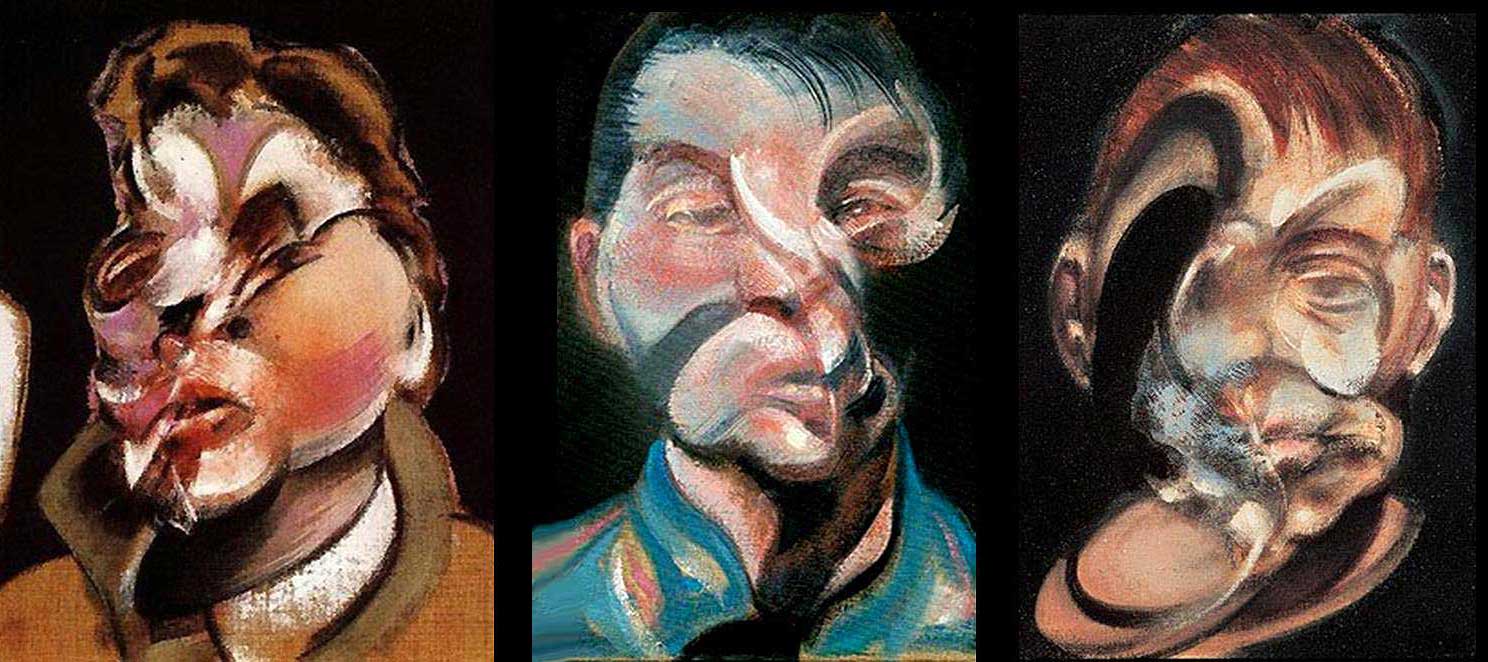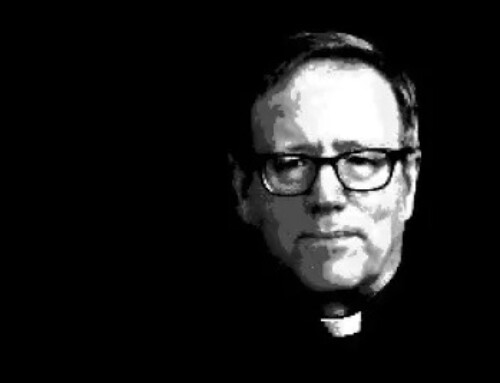(Pictured above: self-portraits by “gay” child abuse survivor Francis Bacon.)
In 1973, the American Psychiatric Association declassified homosexuality as a mental disorder. The American Psychological Association Council of Representatives did the same in 1975. Thereafter other major mental health organizations followed, including the World Health Organization in 1990. Yet, before and since, evidence continues to determine that homosexuality is indeed a mental illness. The way in which most contemporary researches get around this fact is by blaming the high rates of psychiatric morbidity in homosexuals to social and cultural homophobia, internalized homophobia, and overall that homosexuality and mental illnesses are unrelated with the unusual rates of series psychological conditions seen in homosexuals as “possibly linked with discrimination.” Only, this supposition is categorically false, for in the Netherlands, the first country in the world to legalize same-sex marriage, in particular, gay men continue to exhibit a plethora of various mental disorders.*
This revision of homosexuality goes part and parcel with the near contemporaneous movement in the US, beginning in the early-1980s, towards almost complete deinstitutionalization of all categories of mental illness, resulting in the alarming rise of mass killings by the untreated. [See “Out of the Shadows: Confronting America’s Mental Illness Crisis” (1998) by E. Fuller Torrey.] According to the National Institute of Mental Health: in the US, 40% of those with severe bipolar disorder go untreated every year; and, 51% of those with schizophrenia go untreated every year. By contrast, since the 1970s, almost 100% of those with homosexuality are continually medicated for a variety of psychological ailments, while the root cause of the disorder goes untreated.
Within the family, oftentimes from a very young age, those suffering from homosexuality are confirmed in their illness by those who, while outwardly appearing to be well-meaning, facilitate and enable the homosexual within the orientation. This is particularly due to over three decades of mass brain-washing by the homosexual elites and their accomplices in the media – to normalize all forms of deviancy: including homosexuality. In addition, this willingness of certain family members to embrace the homosexual is due to the often unique nature of mental illness, specifically – homosexuality; within the sphere of mental illness, there is characteristically attached to the condition a certain amount of shame for the victim and their family; in terms of homosexuality, this does not so much have to do with the belief that the orientation is a mental illness, but with the unwillingness of the family to acknowledge the reality of the traumatic experiences typically endured by the one who later become homosexual. This sort of bizarre family dynamic was most perfectly illustrated to the extreme in the 1973 book “Sybil:” a novel, based on an actual case, in which a woman, with a disbelieving and deep-in-denial father, suffers from dissociative identity disorder after undergoing years of physical and sexual abuse at the hands of her demented mother. This psychosis can be successfully overcome by what Freud coined as “Grief Work.” Sadly, psychiatric doctors who specialize in this form of “reparative therapy” are becoming fewer; and, are being persecuted by a series of repressive laws that push for the criminalization of any treatment which seeks to heal the “gay” wound.
Then, it’s my contention that homosexuality and “coming out” get welcomed with joy and a smile (even a forced one) because it’s easier for a parent, brother or sister to accept the homosexuality rather than face the ugliness of the past. Because of this avoidance, many parents, even self-proclaimed Christian ones, describe a sense of “relief” when their already often persistently emotionally troubled and unstable children “come –out;” (“When he finally told all of us, it was a huge relief and as if a weight had been lifted.”) In these cases, the homosexuality covers over the mental illness, and the abuse which oftentimes caused it. Most, even if they personally disagree with the idea of homosexuality, decide to do nothing. But, is this being truly Christ-like? Is this the same type of “compassion” that Our Lord had for the mentally ill? Or, like has happened so many times in history, are we taking the easy way out of a difficult situation? In the meantime, those with the homosexual condition, as with others who go untreated for assorted mental disorders, haplessly try to self-medicate and heal; instead of through alcohol or drugs, homosexuals numb their sickness with sex; yet, this form of avoidance is just as deadly: “Although MSM represent about 4% of the male population in the United States, in 2010, MSM accounted for 78% of new HIV infections among males…”
* “Despite the Netherlands’ reputation as a world leader with respect to gay rights, homosexual Dutch men have much higher rates of mood disorders, anxiety disorders and suicide attempts than heterosexual Dutch men. Epidemiologists report similar disparities elsewhere in Western Europe and North America.”
“Exploring a Dutch paradox: an ethnographic investigation of gay men’s mental health.”
Aggarwal S & Gerrets R
Culture, Health & Sexuality 16:105-119, 2014.
The Evidence:
“Of the 1285 gay, lesbian and bisexual respondents who took part, 556 (43%) had mental disorder as defined by the revised Clinical Interview Schedule (CIS-R). Out of the whole sample, 361 (31%) had attempted suicide…Gay, lesbian and bisexual men and women have high levels of mental disorder…”
“Rates and predictors of mental illness in gay men, lesbians and bisexual men and women
Results from a survey based in England and Wales”
James Warner, et al.
British Journal of Psychiatry (2004), 185, 479-485.
“LGB people are at higher risk of mental disorder, suicidal ideation, substance misuse, and deliberate self-harm than heterosexual people.”
“A systematic review of mental disorder, suicide, and deliberate self-harm in lesbian, gay and bisexual people.”
Michael King, et al.
BMC Psychiatry. 2008; 8: 70.
“Self-reported identification as non-heterosexual (determined by both orientation and sexual partnership, separately) was associated with unhappiness, neurotic disorders overall, depressive episodes, generalized anxiety disorder, obsessive-compulsive disorder, phobic disorder, probable psychosis, suicidal thoughts and acts, self-harm and alcohol and drug dependence.”
“Mental health of the non-heterosexual population of England.”
Chakraborty A, et al.
Br J Psychiatry. 2011 Feb;198(2):143-8.
“Gay/lesbian and bisexual respondents had higher levels of psychopathology than heterosexuals across all outcomes. Gay/lesbian respondents had higher odds of exposure to child abuse and housing adversity, and bisexual respondents had higher odds of exposure to child abuse, housing adversity, and intimate partner violence, than heterosexuals. Greater exposure to these adversities explained between 10 and 20% of the relative excess of suicidality, depression, tobacco use, and symptoms of alcohol and drug abuse among LGB youths compared to heterosexuals. Exposure to victimization and adversity experiences in childhood and adolescence significantly mediated the association of both gay/lesbian and bisexual orientation with suicidality, depressive symptoms, tobacco use, and alcohol abuse.”
“Disproportionate exposure to early-life adversity and sexual orientation disparities in psychiatric morbidity.”
McLaughlin KA, et al.
Child Abuse Negl. 2012 Sep;36(9):645-55.
“Compared with heterosexual respondents, gay/lesbian and bisexual individuals experienced increased odds of six of eight and seven of eight adverse childhood experiences, respectively. Sexual minority persons had higher rates of adverse childhood experiences compared to their heterosexual peers.”
“Disparities in adverse childhood experiences among sexual minority and heterosexual adults: results from a multi-state probability-based sample.”
Andersen JP, Blosnich J.
PLoS One. 2013;8(1):e54691.
“The studies reported childhood sexual abuse (CSA), childhood physical abuse (CPA), childhood emotional abuse (CEA), childhood physical neglect, and childhood emotional neglect. Items of household dysfunction were substance abuse of caregiver, parental separation, family history of mental illness, incarceration of caregiver, and witnessing violence. Prevalence of CSA showed a median of 33.5 % for studies using non-probability sampling and 20.7 % for those with probability sampling, the rates for CPA were 23.5 % (non-probability sampling) and 28.7 % (probability sampling). For CEA, the rates were 48.5 %, non-probability sampling, and 47.5 %, probability sampling. Outcomes related to SCE in LGBT populations included psychiatric symptoms, substance abuse, revictimization, dysfunctional behavioral adjustments, and others.”
“Stressful childhood experiences and health outcomes in sexual minority populations: a systematic review.”
Schneeberger AR, et al.
Soc Psychiatry Psychiatr Epidemiol. 2014 Sep;49(9):1427-45.
“Among 287 participants, 211 (73.5%) reported experiencing [child physical abuse] CPA before the age of 17…”
“Association between Childhood Physical Abuse, Unprotected Receptive Anal Intercourse and HIV Infection among Young Men Who Have Sex with Men in Vancouver, Canada”
Arn J. Schilder, et al.
PLoS One. 2014; 9(6): e100501.
“The research results indicate that, as compared with the group of heterosexual individuals, in the group of homosexuals there occurs a worsening in psychological functioning, which may be also manifested by an increased indirect self-destructiveness index. The increased intensity of indirect self-destructiveness in homosexual individuals may be considered a manifestation of worsened psychological functioning.”
“Indirect self-destructiveness in homosexual individuals.”
Tsirigotis K, et al.
Psychiatr Pol. 2015 May-Jun;49(3):543-57.






Hi Joseph,
I was wondering what is the current lifespan of a practicing gay male in America? In 2003 it was 38 years old.
From the “National Center for Chronic Disease Prevention and Health Promotion Division of Population Health:” “Tremendous gains have been made in the health of Americans during the past century. Unfortunately, historically disadvantaged groups including lesbian, gay, bisexual, and transgender (LGBT) adults within the older adult population continue to have higher levels of illness, disability, and premature death.”
I work at a public high school, along side the guidance counselors. My heart breaks for every cross-dressing, gender confused, bisexual, gay, lesbian teen who comes in seeking respite from their pain. All their counselors can do is re affirm them in their orientation and send out emails to the teachers cautioning them to be sure and address them by their chosen gender. We are determined to have a 0 tolerance to bullying environment, but we totally ignore any other causes of their unhappiness. Don't tell me that those kids who are trying to be the opposite gender are in pain only because of lack of acceptance by their peers and families. I hang out with teens all day long. Youth leader, drama club coach, college ready counselor–almost all my hats have to do with working with teens. This teenage generation is definitely the most accepting generation ever. They rejoice in the coming outs. They don't see anything amiss with the phenomena of changing gender proclivity from one year or month to the next. In the meantime, kids who have big pieces missing in their nurturing or were abused at some point, and need therapy desperately, are patted on the head and sent on their way.
Thank you Mr. Schiambra for being a voice of reason. I wish we could get your message spread out into the counseling world.
I work at a public high school, along side the guidance counselors. My heart breaks for every cross-dressing, gender confused, bisexual, gay, lesbian teen who comes in seeking respite from their pain. All their counselors can do is re affirm them in their orientation and send out emails to the teachers cautioning them to be sure and address them by their chosen gender. We are determined to have a 0 tolerance to bullying environment, but we totally ignore any other causes of their unhappiness. Don't tell me that those kids who are trying to be the opposite gender are in pain only because of lack of acceptance by their peers and families. I hang out with teens all day long. Youth leader, drama club coach, college ready counselor–almost all my hats have to do with working with teens. This teenage generation is definitely the most accepting generation ever. They rejoice in the coming outs. They don't see anything amiss with the phenomena of changing gender proclivity from one year or month to the next. In the meantime, kids who have big pieces missing in their nurturing or were abused at some point, and need therapy desperately, are patted on the head and sent on their way.
Thank you Mr. Schiambra, for being a voice of reason. I wish we could get your message to the Christian counseling community, because many of them are sucked in by the lies.